Understanding the role of cylinder mowers in groundscare
Groundscare maintenance involves the precise upkeep of various grass types and turf areas, ranging from public parks to National Trust lawns, roadside verges, and much in between. As such, an array of specialist turfcare equipment, including cylinder mowers, is available and commonly used by grounds professionals across the country.
Using cylinder mowers to cut grass has been the standard since their invention in 1830. In the modern day, in both their walk-behind and ride-on forms, they’re known for their pristine finishes, making them the perfect tool for golf and fine turf.
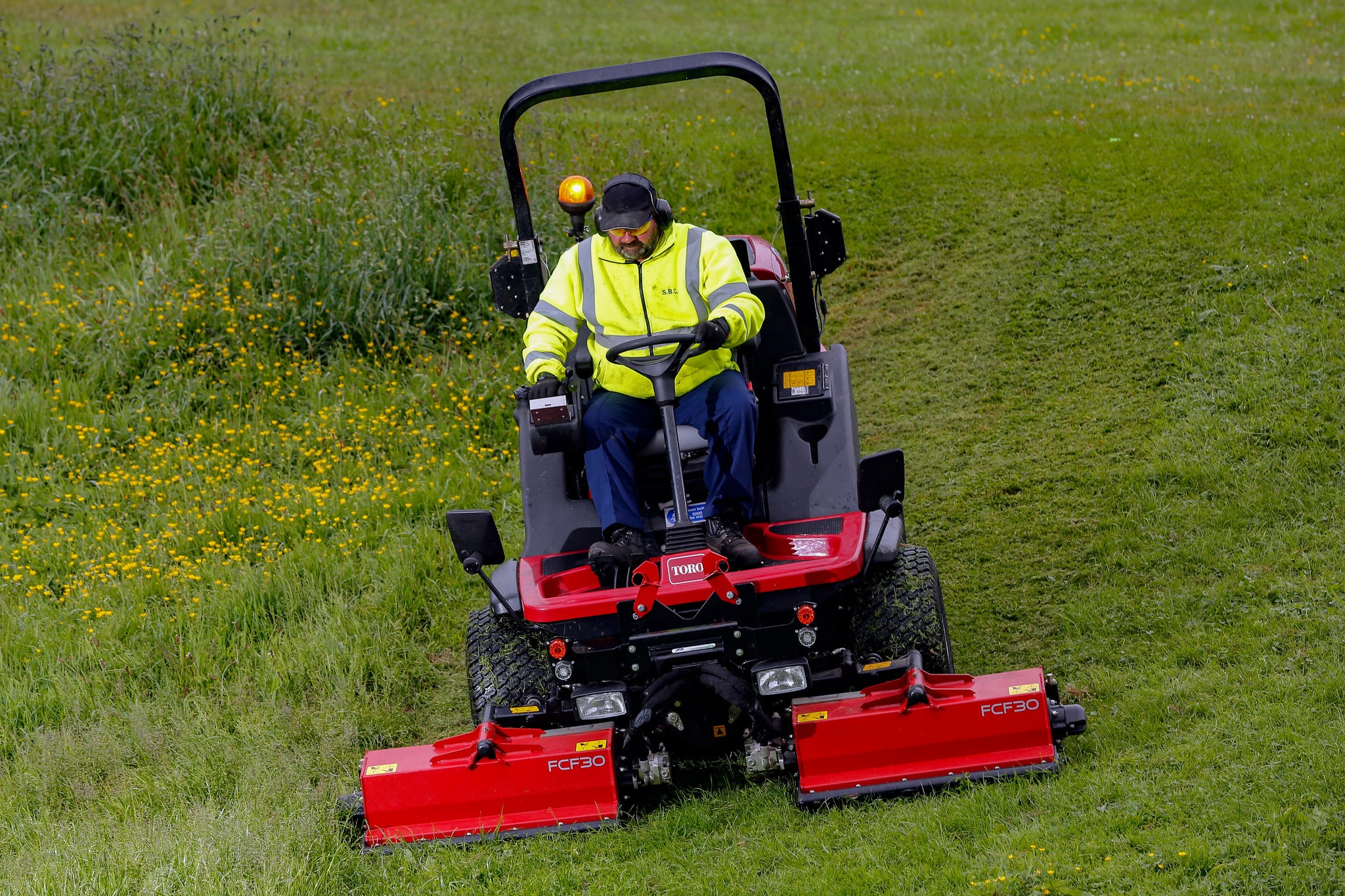
The cylinder mower has maintained its position as a staple in grounds maintenance, too – trusted for its essential role in achieving an exceptional finish through precision cutting, while also holding its own not just on top playing surfaces with its millimetre precision, but also on the roughs of roadside verges.
Groundscare maintenance: which machine should I use?
Maintaining grounds to a high professional standard is a meticulous process that demands attention to detail, suitable equipment, and extensive knowledge of diverse turf types. But maintenance patterns are changing.
Councils are encouraging more rewilding projects and groundskeepers are being asked to keep grasses longer and coarser to improve biodiversity. As such, the use of cylinder mowers may be in decline – and that’s not to mention the fact rotary mowing technology is evolving constantly, increasing in efficiency and precision, giving the cylinder mower stiff competition.
So, when it comes to the tougher conditions of parks and grounds, is there still a spot for this precision machine?
Types of mowers used in groundscare
Understanding mower types is essential to selecting the right equipment for the task at hand. Here’s a quick breakdown of cylinder mowers and rotary mowers and what they are designed for:
Cylinder mowers
Cylinder mowers are designed for fine turf management, such as golf courses and bowling greens, delivering a precise, clean cut that rotary mowers can’t always match. They have a cutting cylinder made of multiple blades rotating against a fixed bottom blade, offering unrivalled cutting quality.
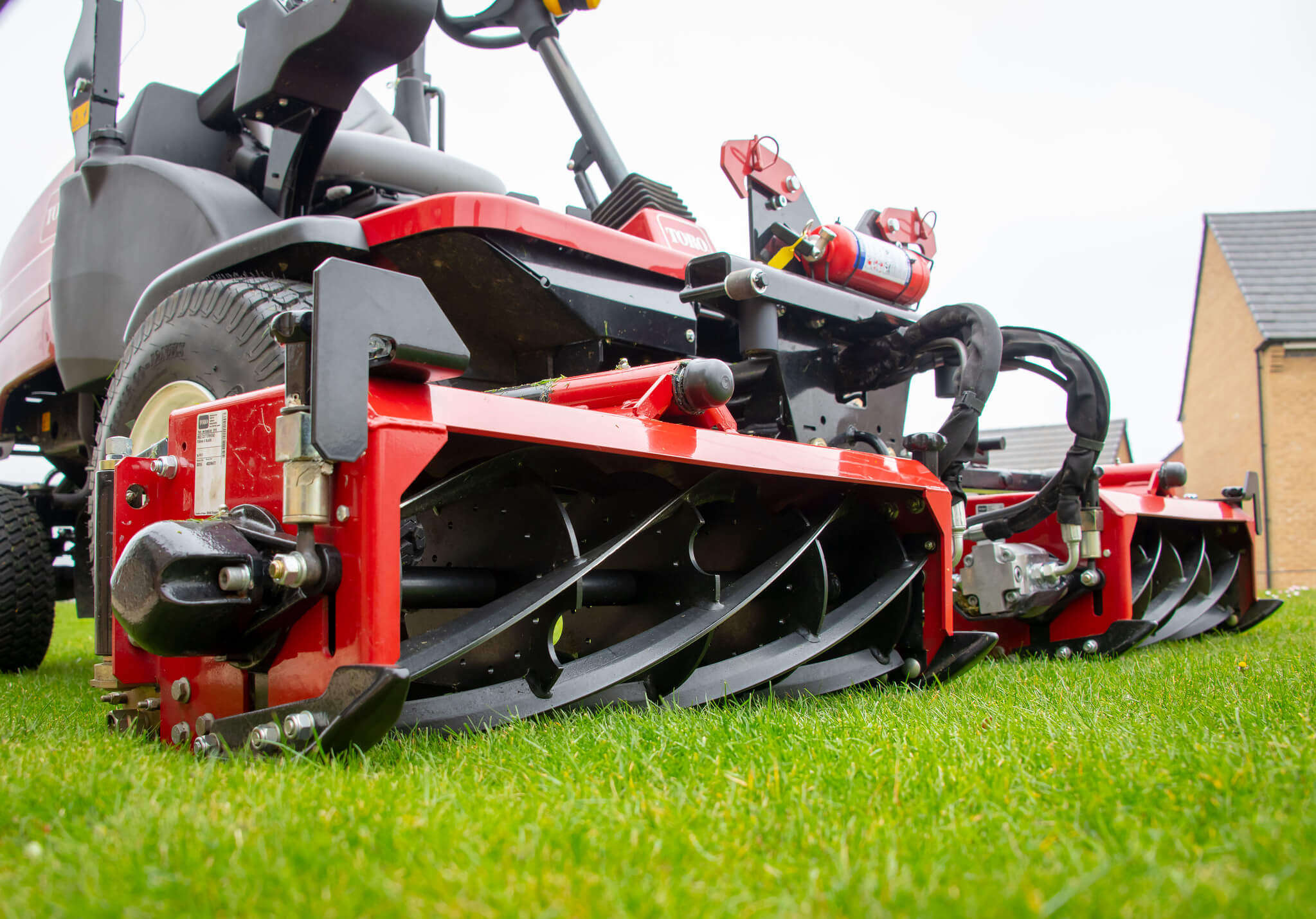
Pros
- Better quality of cut
- Lower height of cut with micro adjustments
- Front-mounted collection
- Rear roller for striping and aesthetics
- Electric, petrol, diesel, and hybrid models available
Cons
- Typically more expensive to purchase and maintain
- Flat area required for lower cutting heights
- Debris can damage blades more easily
- More frequent cutting is required
Rotary mowers
Rotary mowers, in contrast, use high-speed rotating blades to cut grass. They offer faster mowing capabilities, making them ideal for larger or more robust grass types. Rotary models can also handle foreign objects such as twigs or stones more effectively than cylinder machines.
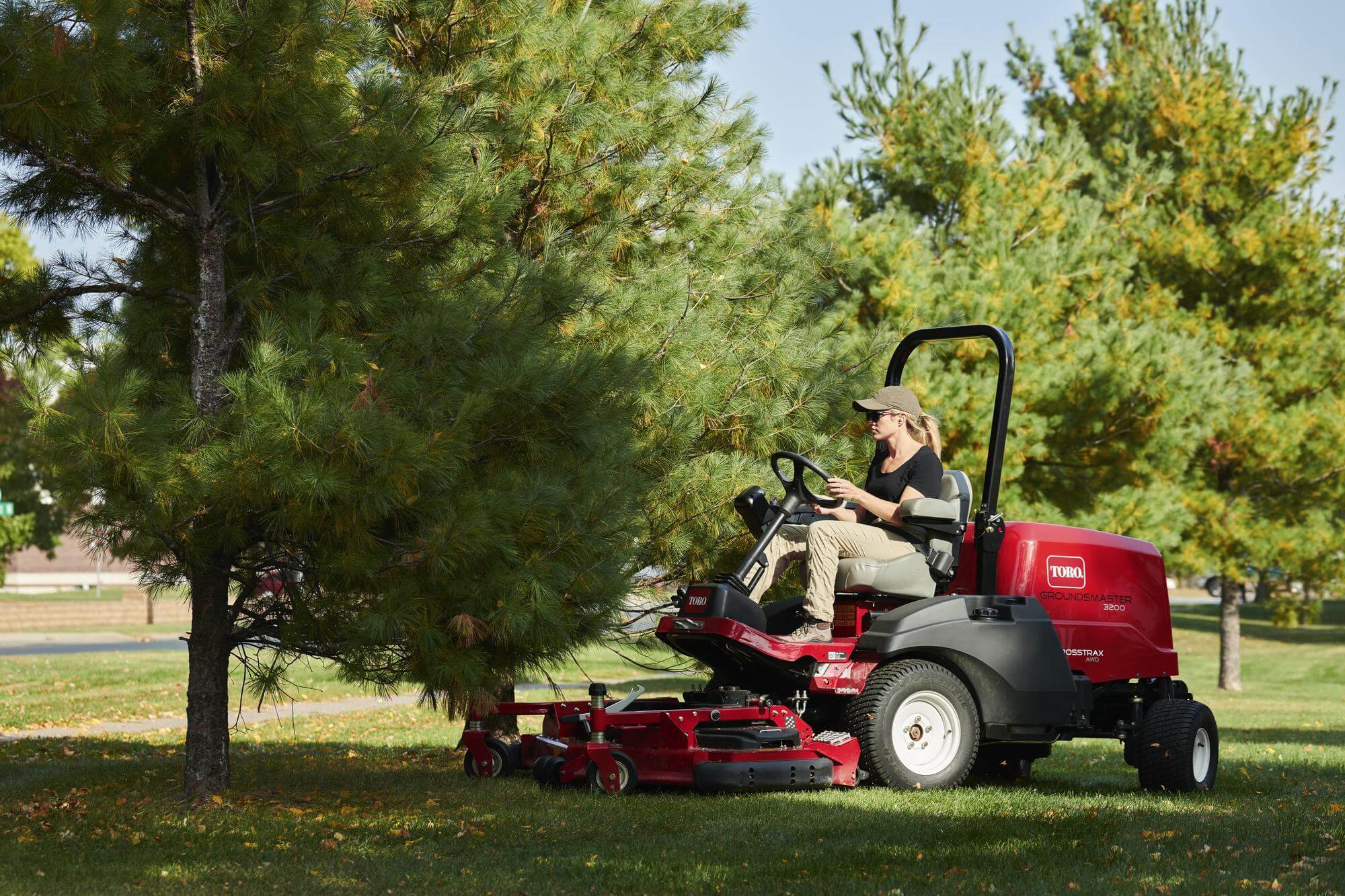
Pros
- More suitable for longer grass
- Less expensive to purchase and maintain
- Electric, petrol, diesel, and hybrid models available
- Less frequent cutting required
- More robust and manages less flat terrain better
Cons
- Lower quality of cut vs cylinder mower
- Typically rear collection only
- Ineffective at striping grass alone
- Less versatile for height of cut (can’t cut below 10mm)
If you need help choosing which type is best for you, read through our comparison guide here
Why do grounds professionals often choose rotary over cylinder mowers?
When it comes to grounds machines, they need to be able to tackle a wide variety of terrains and a diversity of landscapes, cutting a wide range of grass lengths and types. Rotary mowers are typically versatile machines capable of adapting to both rougher terrains and formal lawns alike.
The benefits of a rotary mower
The heart of their effectiveness comes from the rotary blade that rotates horizontally and swiftly – a design that allows for rapid grass cutting and the ability to mow properties or parks with large, grassy areas.
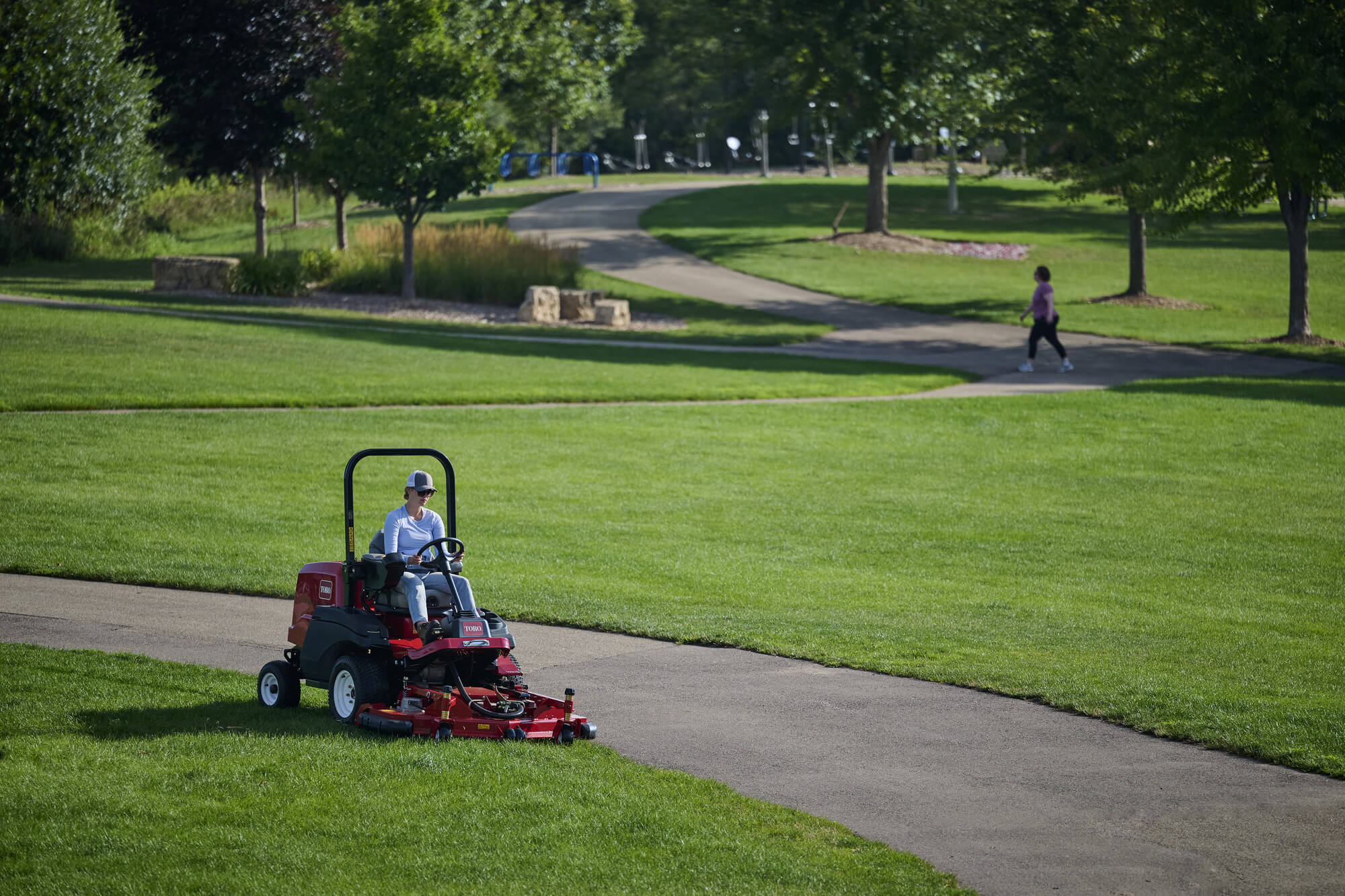
With their high-speed cutting blades, they are efficient and can quickly manage expansive areas and tougher grass conditions. The ability to adjust most models for different heights is also invaluable as it allows grounds professionals to tailor their mowing to specific aesthetic and functional requirements. What’s more, the precision of finish achieved with modern rotary machines means they could be snapping at the heels of cylinders in that category, too.
Examples of rotary mowers used in grounds maintenance
- Toro Groundsmaster 3300. This out-front rotary mowers is able to deliver an exceptional quality of cut even in the most demanding terrains. And when mowing tall, wet grass, the flail deck option ensures high-quality results time after time. Durable and versatile, the 3300 is the go-to rotary mower for teams that need power and precision in one rugged package.
- Toro ProLine H800. Another favourite for grounds operations, this rotary mower is engineered for productivity, letting you mow and collect grass clippings in one seamless motion, delivering a high quality cut finish and minimising interruptions. Its high-lift system makes emptying clippings quick and effortless, and the ability to adjust the height of cut on the go means you don’t have to stop working to adapt to changing turf conditions.
Applications of cylinder mowers in groundscare
That’s not to say the precision of a cylinder mower doesn’t have a place in the grounds industry. Even with the advancement of its rotary counterpart, there are instances where precision continues to be a valued part of grounds maintenance.
Beyond sports applications, cylinder mowers excel in parks, gardens, and stately home grounds; their ability to produce flawless stripes and distinct patterns enhances aesthetic appeal. The machine’s rear roller flattens grass, accentuating desirable patterns and contributing to the overall aesthetic and presentation of the turf.
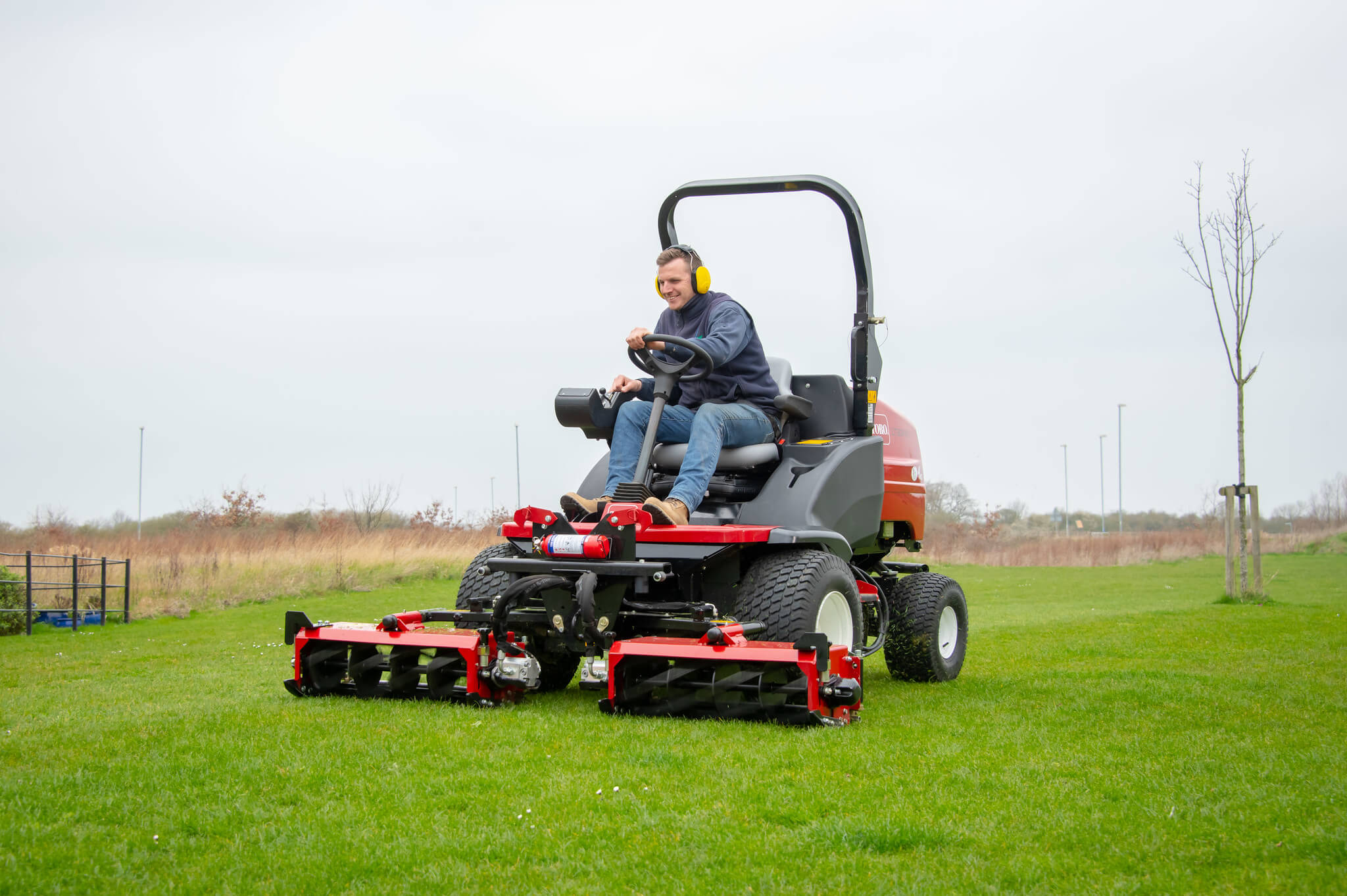
Rotary mower cutting units differ from the mechanism of the cylinder, which sees a cylinder of helical blades rotate against a fixed blade, creating a scissor-like action. Favoured for shorter cutting heights, especially for fine turf, taking this mechanism onto the longer grasses of municipal land can lead to the blades of a cylinder mower becoming clogged and tangled.
When this happens, grounds teams must stop more frequently to clear the cutting deck, which is both labour-intensive and time-consuming. This issue can also impact the mower’s cutting speed, leading to increased wear and tear and potentially putting undue stress on the mower’s engine. Cylinder mowers also require frequent blade sharpening and careful operation to maintain peak performance.
Public parks and National Trust properties
When it comes to maintaining the grounds of a National Trust property a careful balance must be struck between preserving historical authenticity, ecological balance, and aesthetic appeal.

Many properties value local biodiversity, and as such prefer extended cutting cycles and varying grass lengths to create habitats for wildlife and encourage pollination. Depending on the site, some National Trust properties may be committed to protecting certain species and will base grounds maintenance on these ecological drivers.
But interspersed with these rewilded areas are borders and edges, as well as lawns and pathways that make for easy visitor access. These require a much shorter and precise level of cut – the perfect job for a cylinder mower, trusted across the industry for exceptional precision, high quality finish, and ability to produce aesthetic patterns.
The role of cylinder mowers for grounds maintenance
As such, machines may have to adapt between robust mowing and detailed finesse. Going between the two requires two things: a skilled operator and a versatile machine.
When it comes to cylinder mowers, the skill of the operator can often have a much larger bearing than with an out-front rotary and flail mower. Proper operation of cylinder mowers requires skill, experience, and attention to detail.
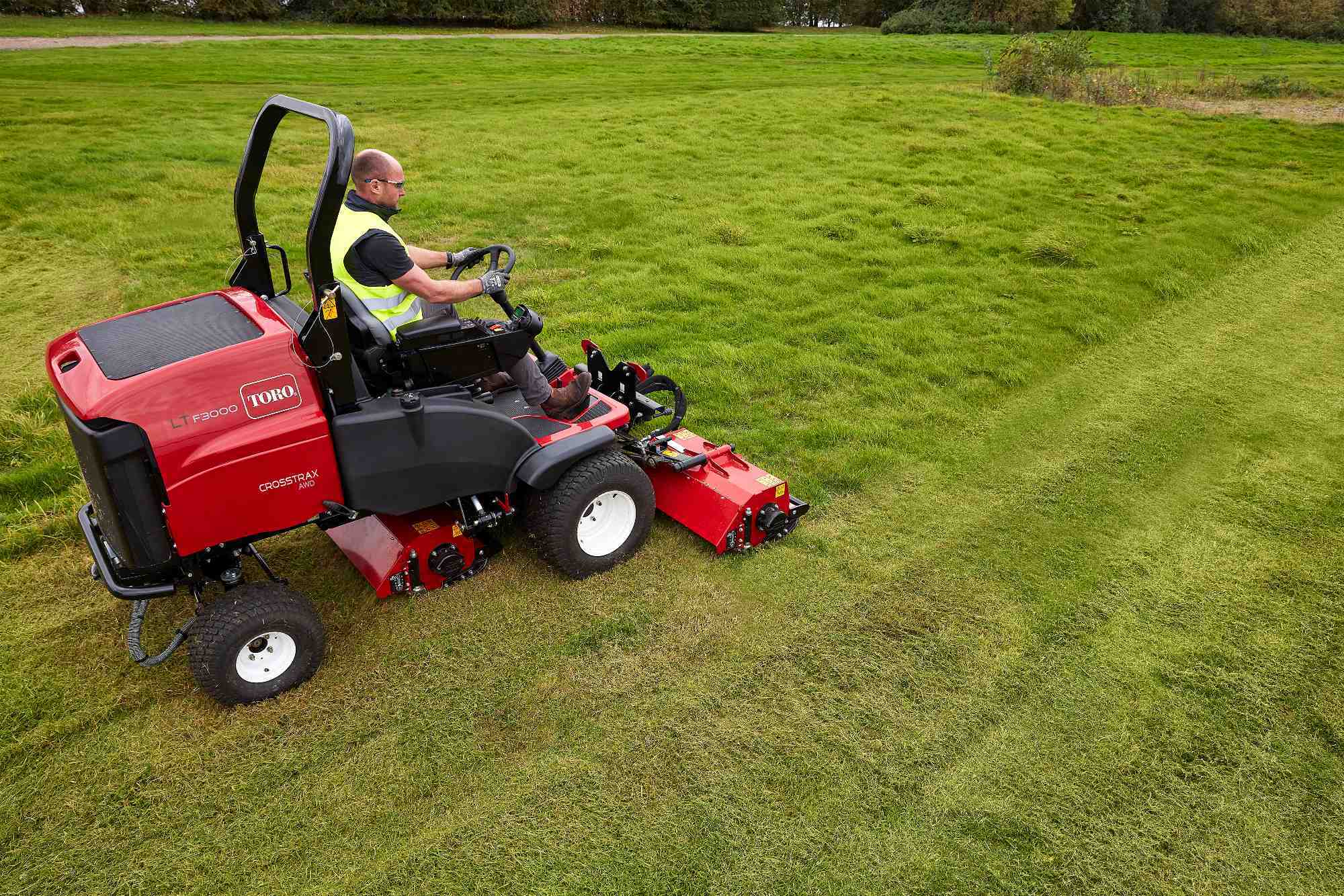
Operators must carefully set the correct cylinder height and mowing speed to prevent scalping, uneven cuts, and a poor after-cut finish. They must also make an effort to avoid foreign objects, such as debris or stones, protect blades from damage, and maintain the integrity of the grounds.
Examples of cylinder and cross-over mowers used in groundscare
Lifting and lowering individual units around obstacles found on municipal grounds can be a complex job. However, when operated correctly, cylinder mowers made by Toro can be the hardest working mowers for grounds applications:
- Toro LT3340. Designed to tackle everything from light trimming to dense, overgrown areas, this mower has been built to take on the most challenging groundscare environments. With a choice of high-performance cutting units in two sizes and a variety of blade configurations, this four-wheel-drive triple-cylinder mower ensures a precise, high quality finish – no matter the conditions.
- Toro LT-F3000. Cross-over machines such as this triple flail mower, with its cylinder attachment, are perfect for meeting the challenges of reduced frequency mowing cycles that can be common in the grounds sectors, while still delivering the perfect cut in more prestigious areas. A FCF-30 cutter unit and Tempest flail blade design, exclusive to Toro, provides fine-cut flail operation which means it can maintain grass both short and long.
Indeed, when it comes to choosing between a cylinder or a rotary mower the solution might be easier than first thought. Cross-over machines can provide the best of both worlds.
By adding an attachment, such as with Toro LT-F3000, mowers can be transformed from a powerhouse triple flail mower to a fine-cut cylinder. This maximises usability, allowing operators to use just a single machine where they might have otherwise needed two.
The importance of training in groundscare
Training grounds maintenance teams to maintain and operate cylinder mowers correctly is essential, ensuring safety, reducing downtime, and enhancing overall efficiency. At Reesink, the UK’s exclusive distributor of Toro machinery, we offer a range of training courses to make sure you get the very best from all ride-on mowers.
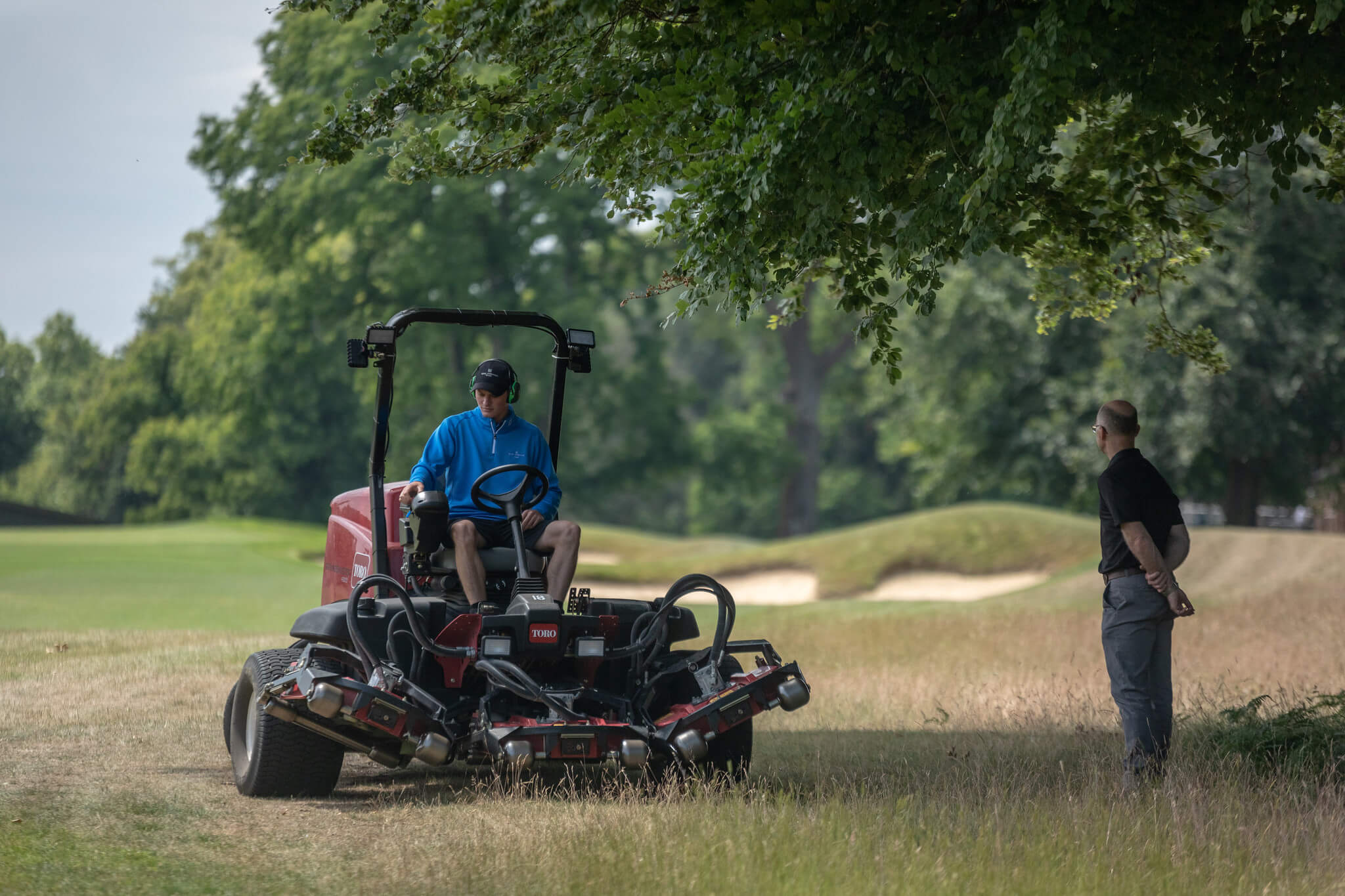
Reesink Turfcare’s ‘Safe Use of Ride-On Mowers’ course provides groundskeepers with the most up-to-date training on Toro mowers, which means a cylinder mower can work as efficiently as a rotary in many cases across more unkempt terrains.
A thorough overview of machine operation and guidance on how to check and maintain the equipment means an operator can transfer between finessing edges and tackling tougher growth with ease, which is essential in the groundscare sector.
So, is there still a role for cylinder mowers in grounds?
Cylinder mowers occupy a vital position in modern groundscare maintenance, uniquely suited to tasks demanding precision, aesthetics, and high quality finishes. While cylinder mowers may demand more meticulous maintenance and skilful operation compared to rotary counterparts, their benefits justify these investments.
But we also think you’ll agree there’s no either/or. By combining the benefits of the rotary and cylinder mower, you can save time and money, switching with ease between short precision cuts and tackling longer, wetter, coarser grass without the need to switch out equipment entirely on the job. Cross-over machines are perhaps the definition of productivity by design – quite literally built to tackle everything.
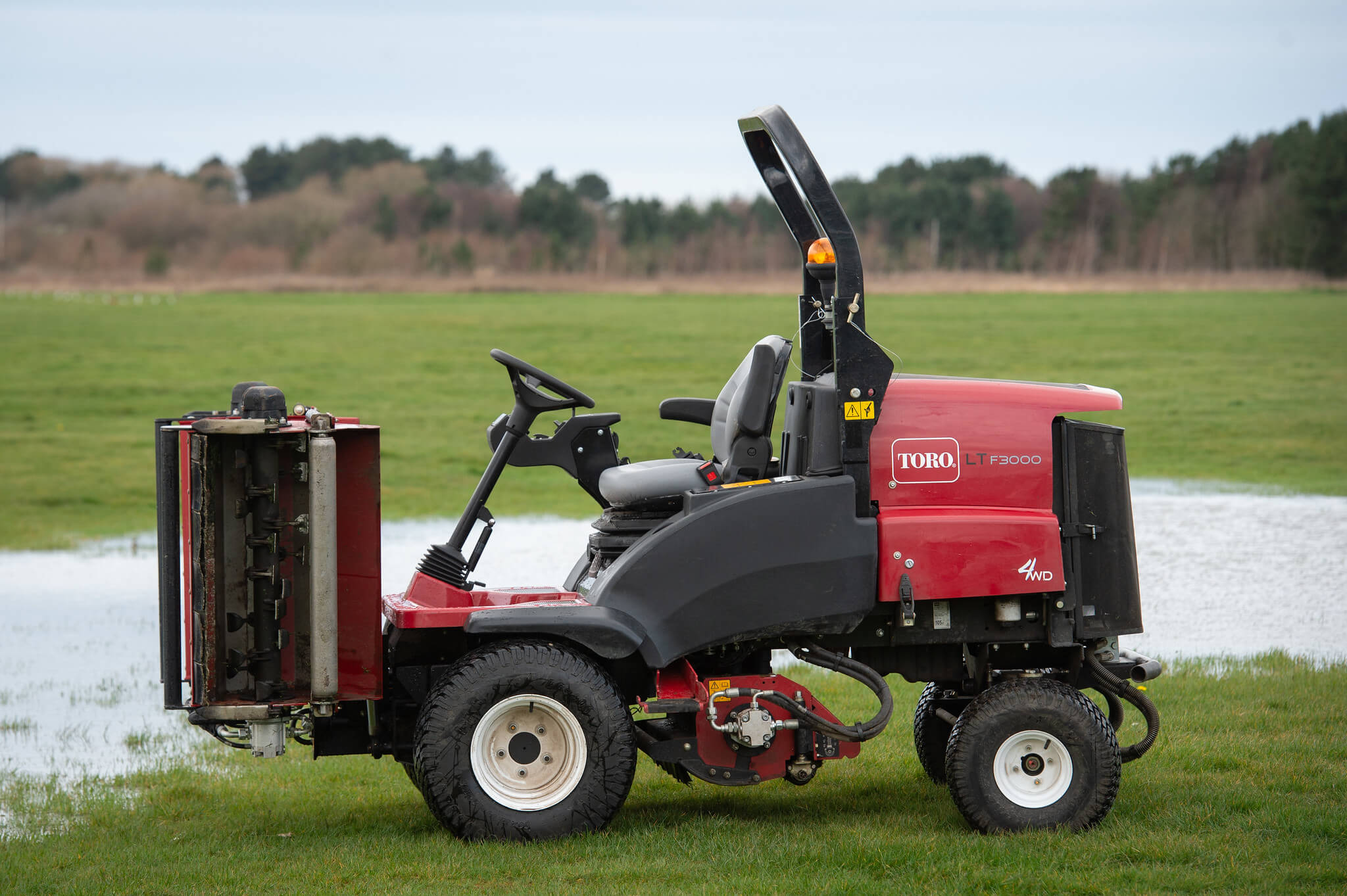
Explore our full range of cylinder, rotary, and cross-over mowers at www.reesinkturfcare.co.uk, or get expert advice from our product specialists by calling 01480 226800.